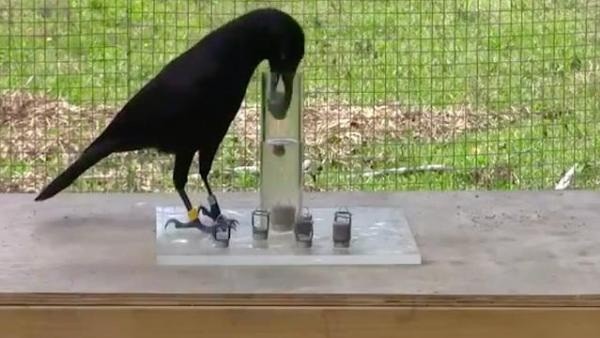New Caledonian crows are famous for being one of the few birds that has been documented to use rudimentary tools. A new study conducted by Alejandro Kacelnik and Antone Martinho from the University of Oxford in Britain and colleagues has shown that the crows have a definite preference for using the left or the right side of their beak for manipulating tools.
Handedness in humans is distinguished by a preference in early life to use either the right hand or the left hand. A similar preference in New Caledonian crows was found to exist in opting for which side of the beak was used preferentially for using tools to extract larvae and insects from nests. The preference was found to be a compensation for the limitations of vision that proximity to the prey produces and an inherent high level of binocular vision in the birds.
Binocular vision produces a wider field of view in the birds and allows them to see better with one eye at the time. Each bird differs from its kin in the focus and acuity of each eye. A preference for one side of the beak reflects better vision in one eye and is a compensation for the short distance between the eye and the end of the beak that manipulates the tool.
This is the first documented example of a preference for tool manipulation that is handed in animals that are not humans or apes. The researchers consider the handedness in both men and New Caledonian crows may be a genetic inheritance that is as yet undefined but could be common to both species. Tool use is found in some insects, apes, and a few birds as well as humans.















